- Shop
- Apparel
- Berries
- Books
- Bundles
- Citrus
- Fertilizer & Pest Control
- Fruiting Ground Covers
- Fruiting Shrubs
- Fruiting Trees
- Herbs, Spices, and Teas
- Mason Bees
- Nitrogen Fixers and Companion Plants
- Northwest Natives
- Nut Trees
- Ornamentals & More
- Perennial Vegetables
- Rootstock
- Subtropical Fruits
- Tools
- Vines
- Xeriscape
- Sale Items
- Information
- Nursery News
- Contact Us
- My Account
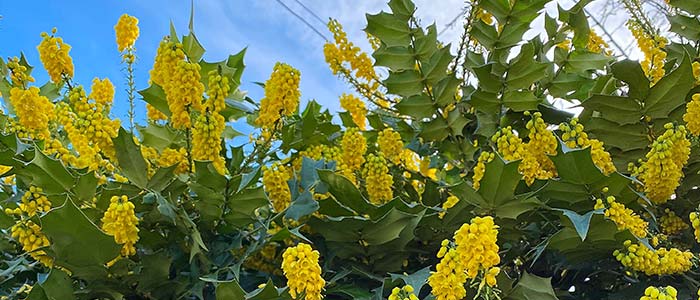
Flowers in winter!
Winter is usually the last season that comes to mind when thinking of plants in bloom, but adding winter interest to the garden does wonders in getting us through the darker months of the year. Too many gardens we visit in the winter look so bleak, dark, deciduous and grey at this time of year. As if the grey skies weren’t dreary enough, (thought not so much this winter), a garden full of deciduous plants that won’t wake up again until April doesn’t do much to lift your spirits this time of year.
But luckily for us in the milder parts of the country, and even for those of you in the colder pockets of the country, there are a great number of plants that look their best and put on their fabulous floral displays all throughout the winter. Some start in fall when the winter rains return, such as this loquat that began flowering right on cue with the return of the rains in October and has been going strong ever since.
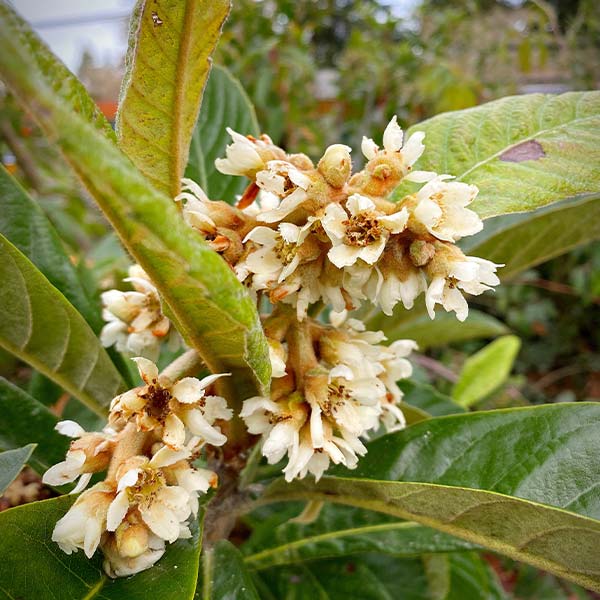
We have 5 different clones planted around the nursery right now and most of them are flowering. Though we’ve had a handful of dips below freezing at night, the loquats seem to be on a continuous flowering cycle and our fingers are crossed that enough pollinators will be out and about to ensure we get some fruit this spring.
And speaking of pollinators, one of our favorites, the Anna’s hummingbird, has been hanging around the nursery all winter! We have a real soft spot for these hovering beauties and much of the plants around the nursery are planted to attract them throughout the winter.
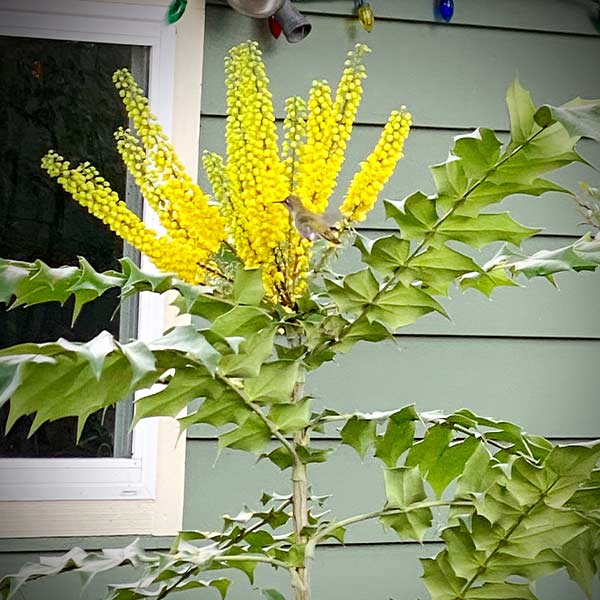
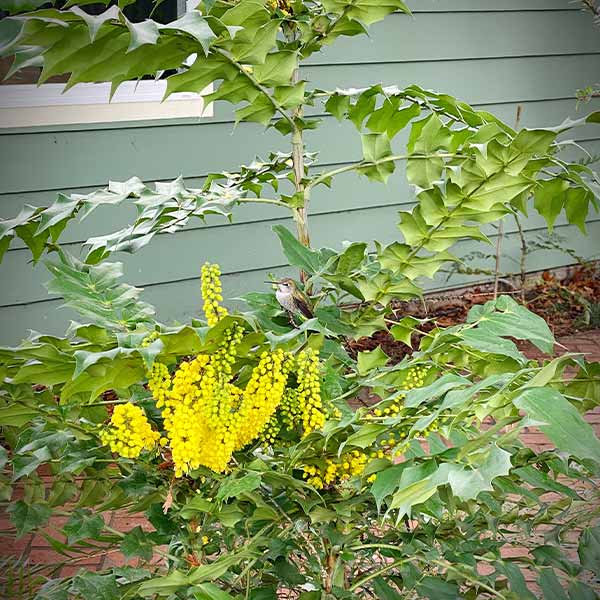
Here a hummingbird is feeding on the newly opened blossoms of the Arthur Menzies Mahonia. This plant started flowering right at the turn of the new year and has been slowly opening up more and more of its large flowering spikes! Though it already looks like one of our native mahonias on steroids, this cultivar can achieve heights up to 15 feet! We’ve been watching the hummers feed from this and rest in the branches of the towering Western Red Cedar above it for weeks now.
But if you’re a true lover of the hummingbirds and want to have them visiting you all year round then there’s few better choices than the Grevilleas! These evergreen shrubs from down under flower nearly year round, taking only a quick break during the summer dry season but go on producing an abundance of their spider-like proteaceous flowers all winter long!
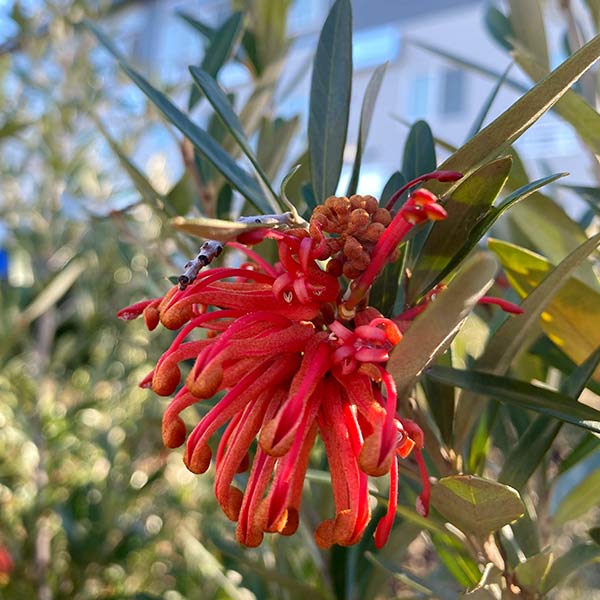
The Darwin’s barberries have been another favorite nectar source for our resident humming birds since October! Our winged friends will ensure that we have loads of delicious barberries to snack on this summer.
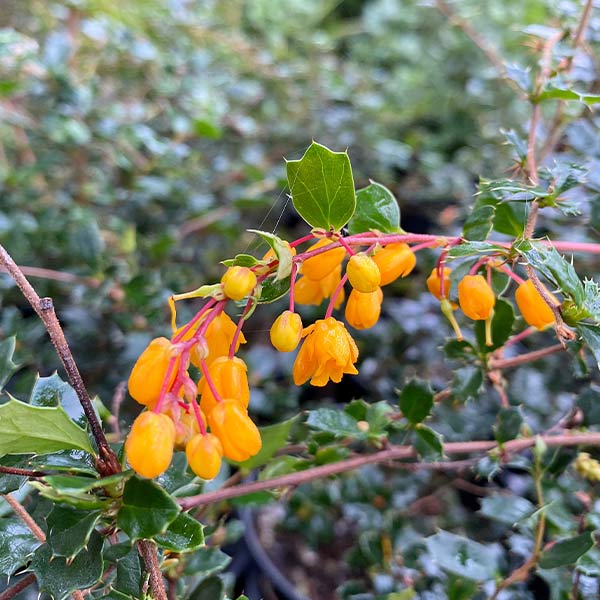
It might seem peculiar, especially for those of you who inhabit much colder climates, that these plants choose to flower when the weather frequently dips below freezing. Why not just flower in spring when the weather warms up and there’s still ample moisture in the soil? The answers are varied and of course have everything to do with each species’ natural history, but the one huge advantage, (at least from this fruit-focused nursery’s point of view), is that the fruits they produce will ripen at a time when not many other fruits are. These plants essentially “corner the market” on the seed dispersers who will eat their fruits and spread their seeds at a time of year when few other fruits are around. If your flowers are hardy enough to make it through frosts, you have exclusive access to the pollinators that are active during winter, evapo-transpiration rates are extremely low, and by the time you’ve finished the extremely energy intensive process of ripening fruit you are ready to coast through the dry months of summer, at least in our climate.
Many, if not most, of these winter flowering species are also coming from climates that have a distinct dry season in summer and a mild, wet winter such as we do here. For that reason it makes a lot of sense to get the whole act of flowering and fruiting that utilizes so much of the plants precious energy finished while there is still ample rainfall and cooler weather. Right now the manzanitas, cyclamens, hellebores, rosemaries and coast silk tassels have started flowering, and even the Ceanothus, typically not the earliest, is starting to open a few cautious flowers during these mild January days.
(insert manzanita, ceanothus and garrya photos)
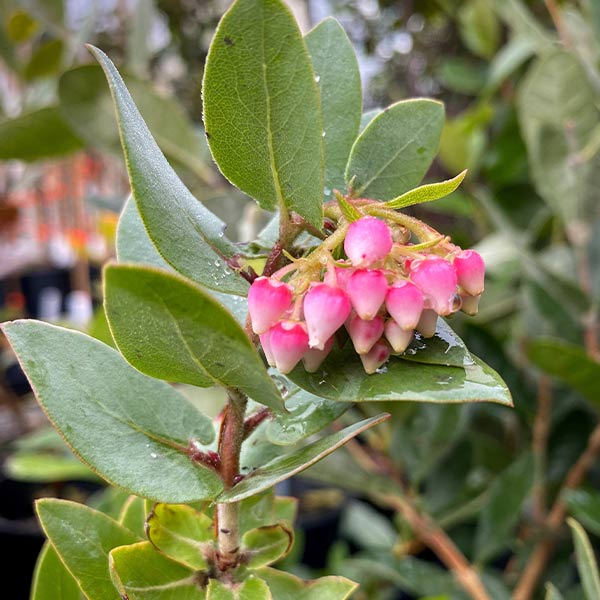
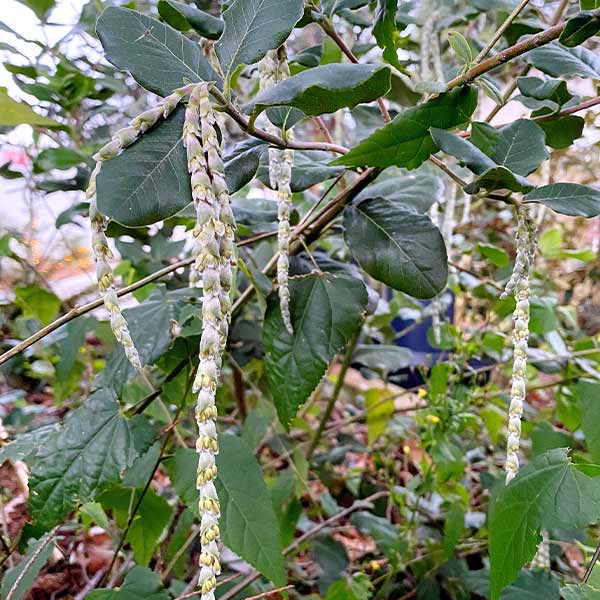
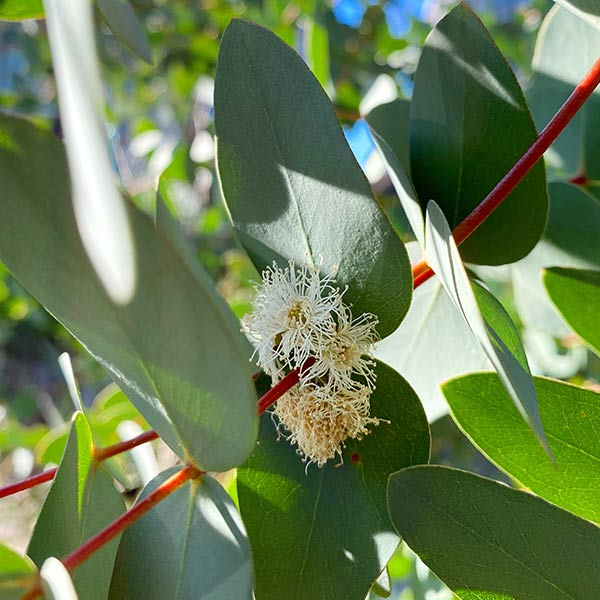
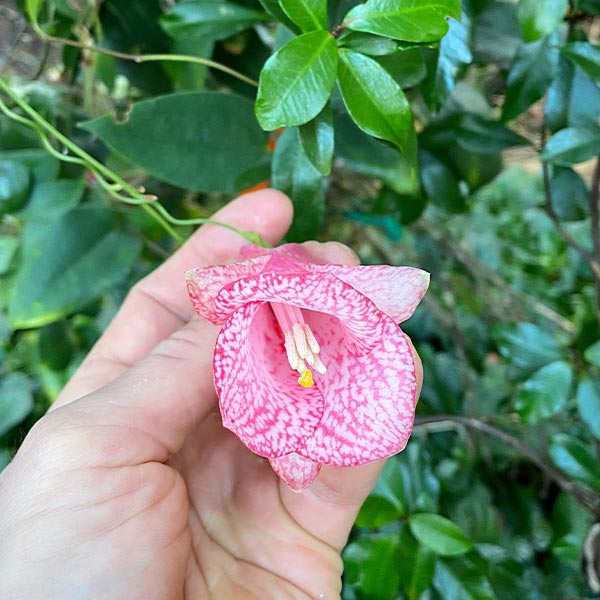
It’s just the beginning of what has been described in our part of the world as the longest, slowest spring you’ll ever witness. As soon as seriously cold weather subsides, and often quite a bit before, a whole cast of botanical characters come out to play their parts. It makes the darker days of winter so much more exciting and hopeful when a little sprinkle of flowers here or there, maybe outside a kitchen window or right along a main pathway, can really brighten our moods and have us dreaming of the fruits they’ll be making as the days get longer and warmer.
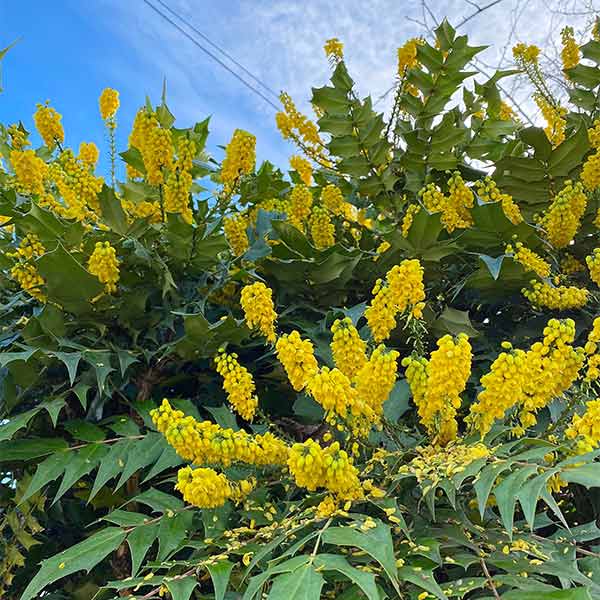
Take a look around your garden and see where a few more winter flowers or evergreen shrubs might add some sparkle to your winter days and pull you outside to take in winter’s beauty!
